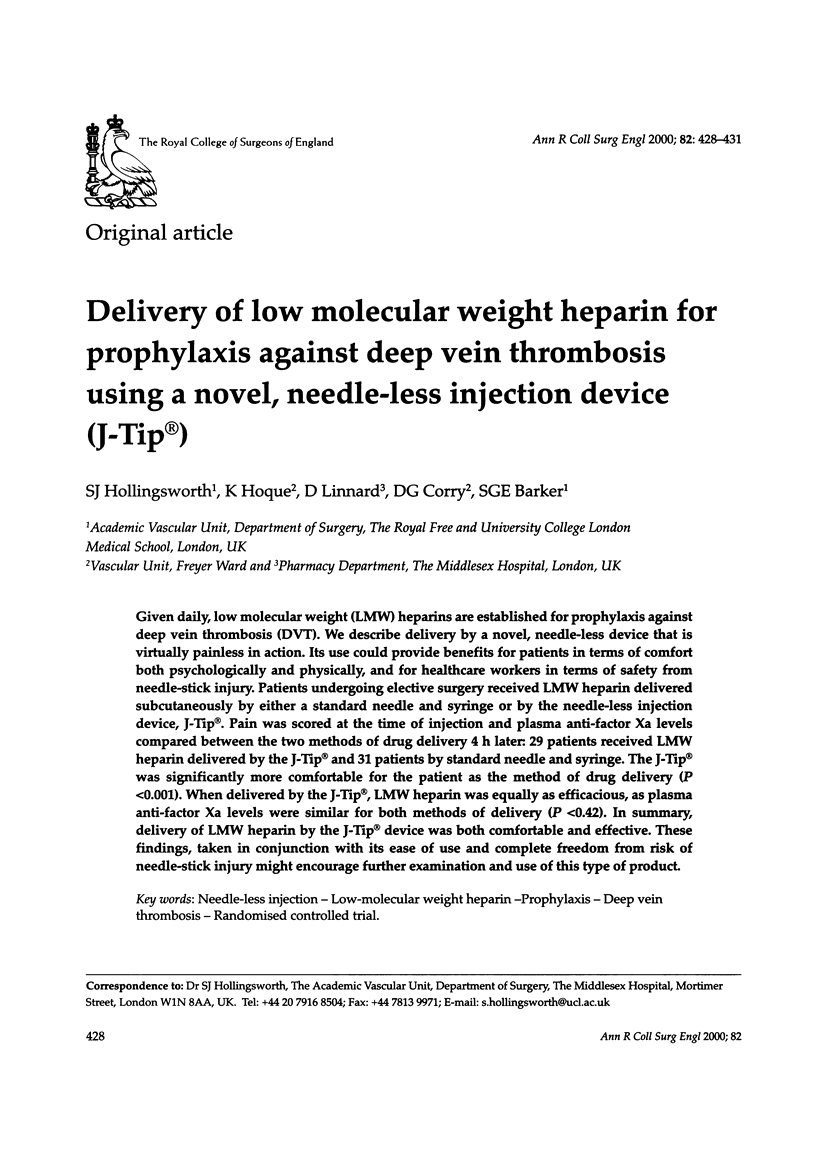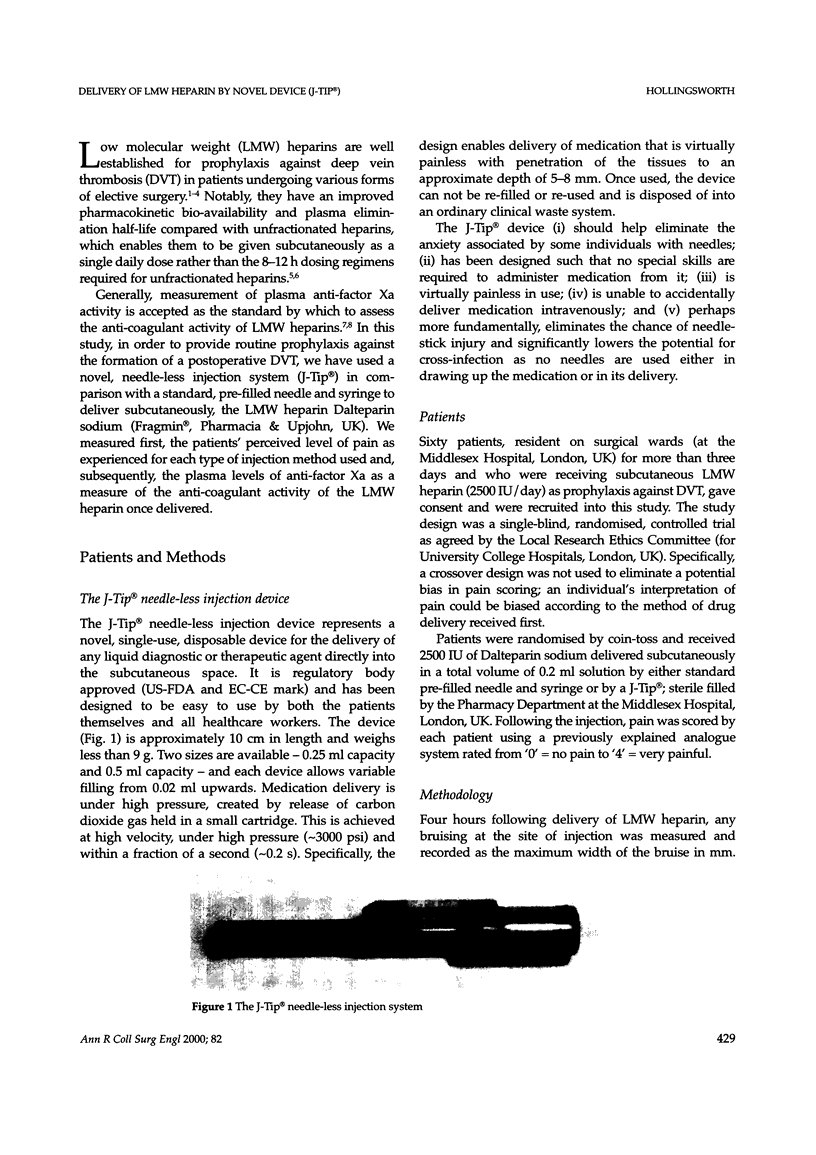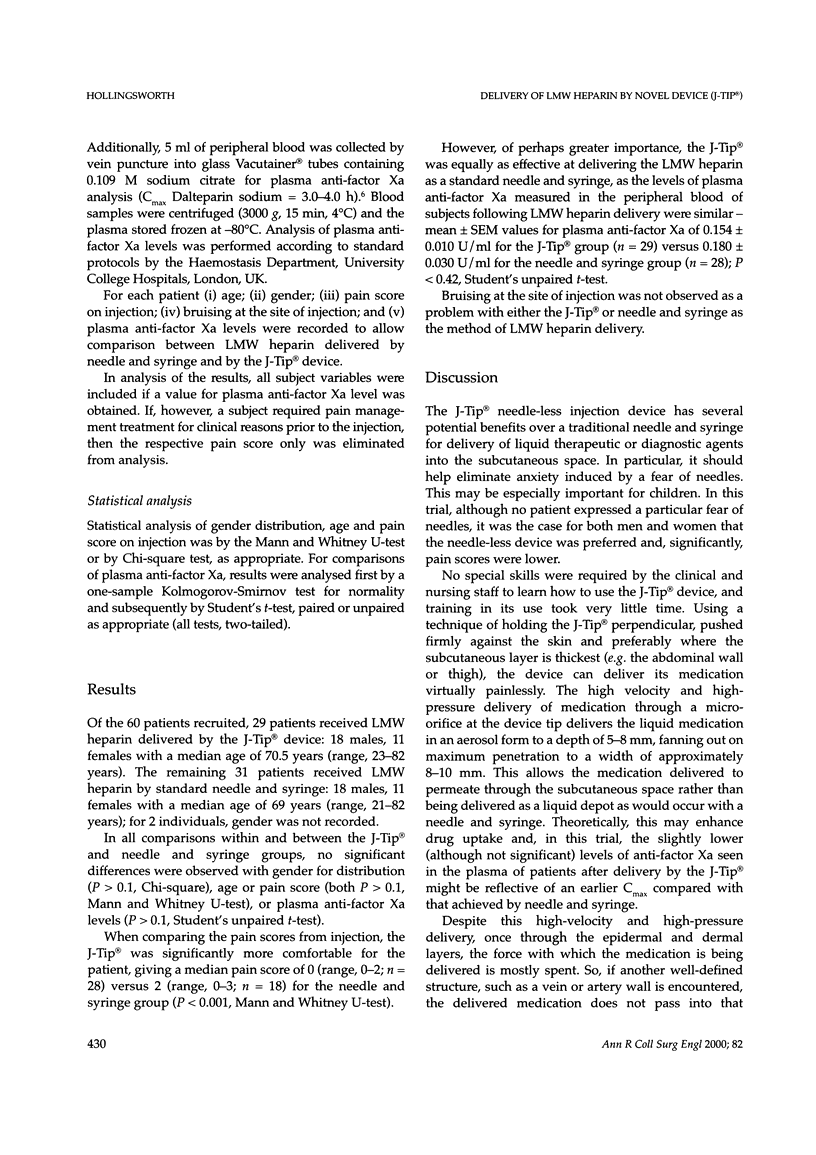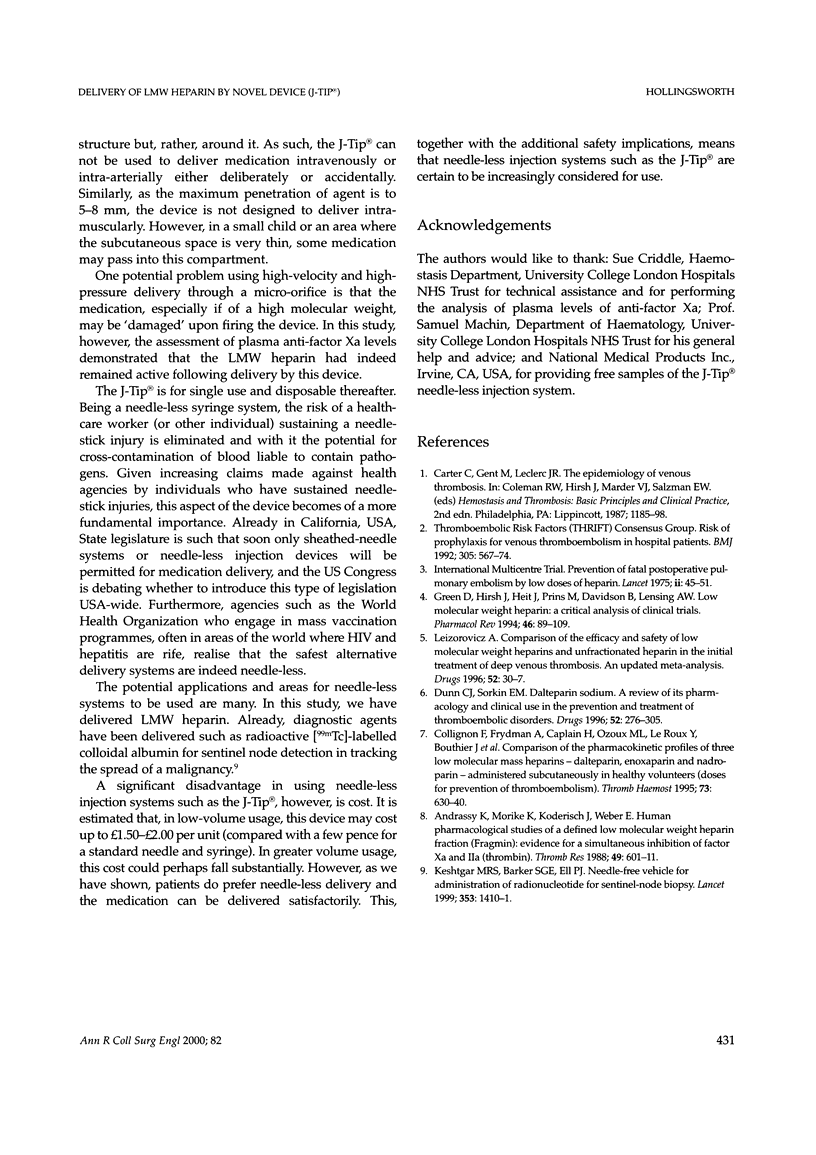Abstract
Given daily, low molecular weight (LMW) heparins are established for prophylaxis against deep vein thrombosis (DVT). We describe delivery by a novel, needle-less device that is virtually painless in action. Its use could provide benefits for patients in terms of comfort both psychologically and physically, and for healthcare workers in terms of safety from needle-stick injury. Patients undergoing elective surgery received LMW heparin delivered subcutaneously by either a standard needle and syringe or by the needle-less injection device, J-Tip. Pain was scored at the time of injection and plasma anti-factor Xa levels compared between the two methods of drug delivery 4 h later: 29 patients received LMW heparin delivered by the J-Tip and 31 patients by standard needle and syringe. The J-Tip was significantly more comfortable for the patient as the method of drug delivery (P < 0.001). When delivered by the J-Tip, LMW heparin was equally as efficacious, as plasma anti-factor Xa levels were similar for both methods of delivery (P < 0.42). In summary, delivery of LMW heparin by the J-Tip device was both comfortable and effective. These findings, taken in conjunction with its ease of use and complete freedom from risk of needle-stick injury might encourage further examination and use of this type of product.
Full text
PDF



Images in this article
Selected References
These references are in PubMed. This may not be the complete list of references from this article.
- Andrassy K., Mörike K., Koderisch J., Weber E. Human pharmacological studies of a defined low molecular weight heparin fraction (Fragmin) evidence for a simultaneous inhibition of factor Xa and IIa (thrombin). Thromb Res. 1988 Mar 15;49(6):601–611. doi: 10.1016/0049-3848(88)90257-5. [DOI] [PubMed] [Google Scholar]
- Collignon F., Frydman A., Caplain H., Ozoux M. L., Le Roux Y., Bouthier J., Thébault J. J. Comparison of the pharmacokinetic profiles of three low molecular mass heparins--dalteparin, enoxaparin and nadroparin--administered subcutaneously in healthy volunteers (doses for prevention of thromboembolism). Thromb Haemost. 1995 Apr;73(4):630–640. [PubMed] [Google Scholar]
- Dunn C. J., Sorkin E. M. Dalteparin sodium. A review of its pharmacology and clinical use in the prevention and treatment of thromboembolic disorders. Drugs. 1996 Aug;52(2):276–305. doi: 10.2165/00003495-199652020-00011. [DOI] [PubMed] [Google Scholar]
- Green D., Hirsh J., Heit J., Prins M., Davidson B., Lensing A. W. Low molecular weight heparin: a critical analysis of clinical trials. Pharmacol Rev. 1994 Mar;46(1):89–109. [PubMed] [Google Scholar]
- Keshtgar M. R., Barker S. G., Ell P. J. Needle-free vehicle for administration of radionuclide for sentinel-node biopsy. Lancet. 1999 Apr 24;353(9162):1410–1411. doi: 10.1016/s0140-6736(99)00468-7. [DOI] [PubMed] [Google Scholar]
- Leizorovicz A. Comparison of the efficacy and safety of low molecular weight heparins and unfractionated heparin in the initial treatment of deep venous thrombosis. An updated meta-analysis. Drugs. 1996;52 (Suppl 7):30–37. doi: 10.2165/00003495-199600527-00006. [DOI] [PubMed] [Google Scholar]



